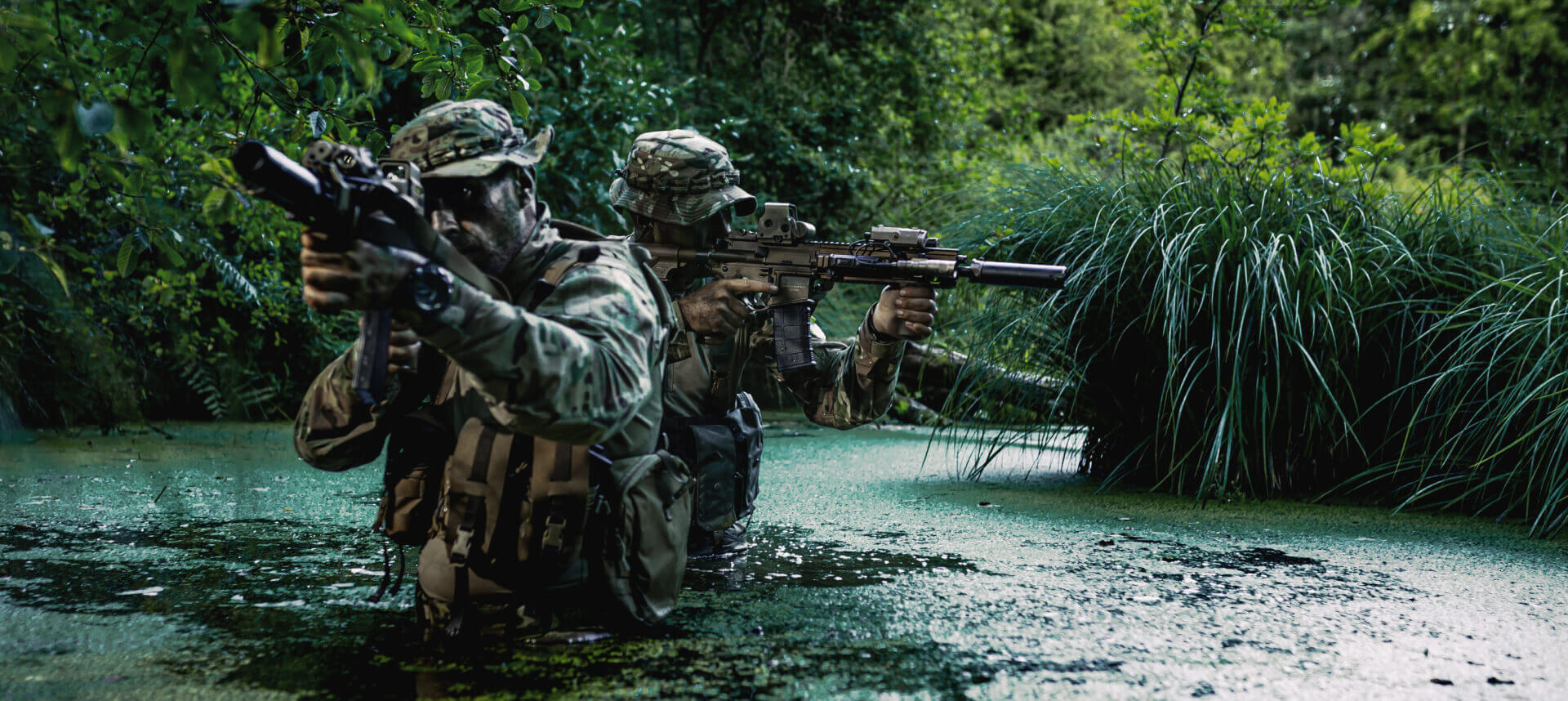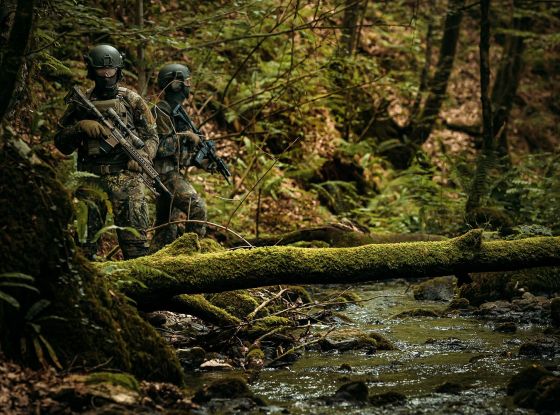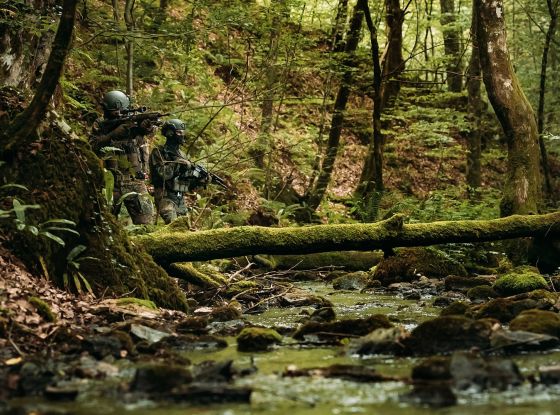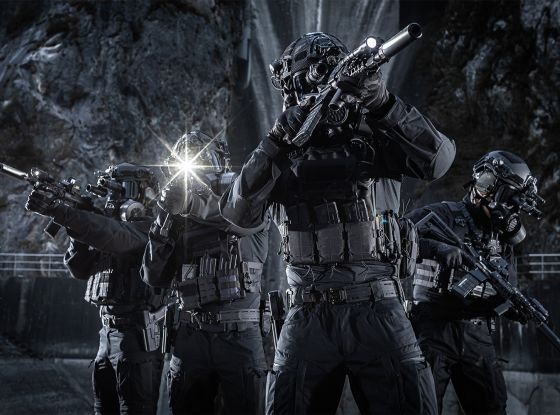When you enter a tropical jungle, it’s like stepping into a new world. The colors are intense, the sounds are constant, and the environment feels alive with every step. In this chaotic setting, standing out can be dangerous.
In this blog post:
- Mastering Tropical Camouflage Patterns for the Jungle
- Why Tropical Camouflage Matters
- Understanding the Unique Challenges of Jungle Terrain
- How Camouflage Works in Tropical Environments
- Key Features of Effective Tropical Camouflage
- Top Camouflage Patterns for Jungle Survival
- Choosing the Right Tropical Camouflage for Your Needs
- Effective Camouflage Techniques in Action
- Final Thoughts
Mastering Tropical Camouflage Patterns for the Jungle
When you enter a tropical jungle, it’s like stepping into a new world. The colors are intense, the sounds are constant, and the environment feels alive with every step. In this chaotic setting, standing out can be dangerous.
Whether on a mission or exploring, blending in with your surroundings is important for survival. To achieve this, you need to master a jungle camouflage uniform. This guide shows the best tropical camouflage patterns, the challenges of the terrain, and why tropical camouflage works.
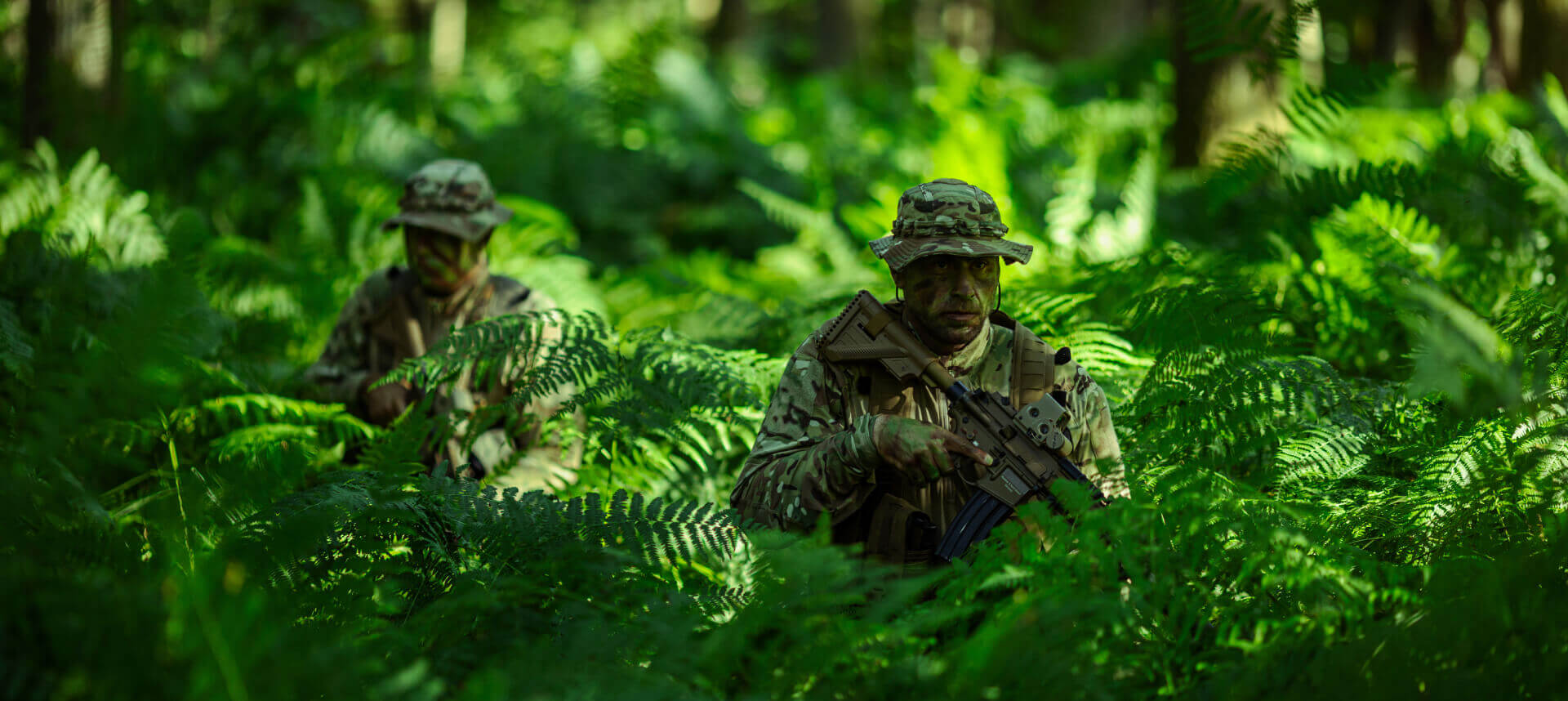
SUBSCRIBE TO UNLOCK OUR EXCLUSIVE CONTENT
Enter your email and get timely updates and relevant intel on tactical topics directly to your inbox.
You are signing up to receive updates via e-mail from which you can opt out at any time. Visit our privacy policy for more info.
Why Tropical Camouflage Matters
Tropical jungles are demanding environments. Bright greens, deep browns, and shifting shadows fill the landscape, creating a sensory overload.
A person stands out without the right camouflage in this busy mix of color and movement. Effective camouflage helps you blend in, minimizes visibility, and keeps you safe. Choosing the right camouflage is a decision that could mean the difference between safety and danger.
Understanding the Unique Challenges of Jungle Terrain
To pick the right camouflage for the jungle, you need to know the types of terrain in tropical environments. Not all jungles are alike. Tropical jungles include different landscapes, each with its own challenges for staying hidden. These terrains generally fall into three main types: rainforests, monsoon forests, and savannas.
-
RAINFORESTS
Rainforests are lush and dense, with tall trees forming a thick canopy that blocks out most sunlight. This results in a shadowy, dim environment with scattered spots of sunlight. Rainforests are full of green shades, deep shadows, and earthy tones, making camouflage challenging. The dense foliage, dark underbrush, and towering trees demand a camouflage that can match this layered landscape.
-
MONSOON FORESTS
Monsoon forests undergo seasonal extremes, swinging from bone-dry conditions to waterlogged terrain. Depending on the season, the density of vegetation in a monsoon forest can vary, requiring adaptable camouflage. In the dry season, the forest is sparse and easier to navigate, but in the wet season, it becomes dense and full of greenery. Camouflage in monsoon forests needs to be versatile enough to blend in with both open and dense conditions.
-
SAVANNAS
Unlike dense rainforests, savannas are open with scattered trees and tall grasses. Here, you need a camouflage that blends in both shade and sunlight. Savannas are mostly earth-toned with some green, so your camouflage should help you stay unnoticed in these wide, mixed areas.
Each of these terrains presents a unique visual signature that requires specific features in your camouflage. To navigate a tropical jungle, you need adaptable camouflage that helps you blend into any background.
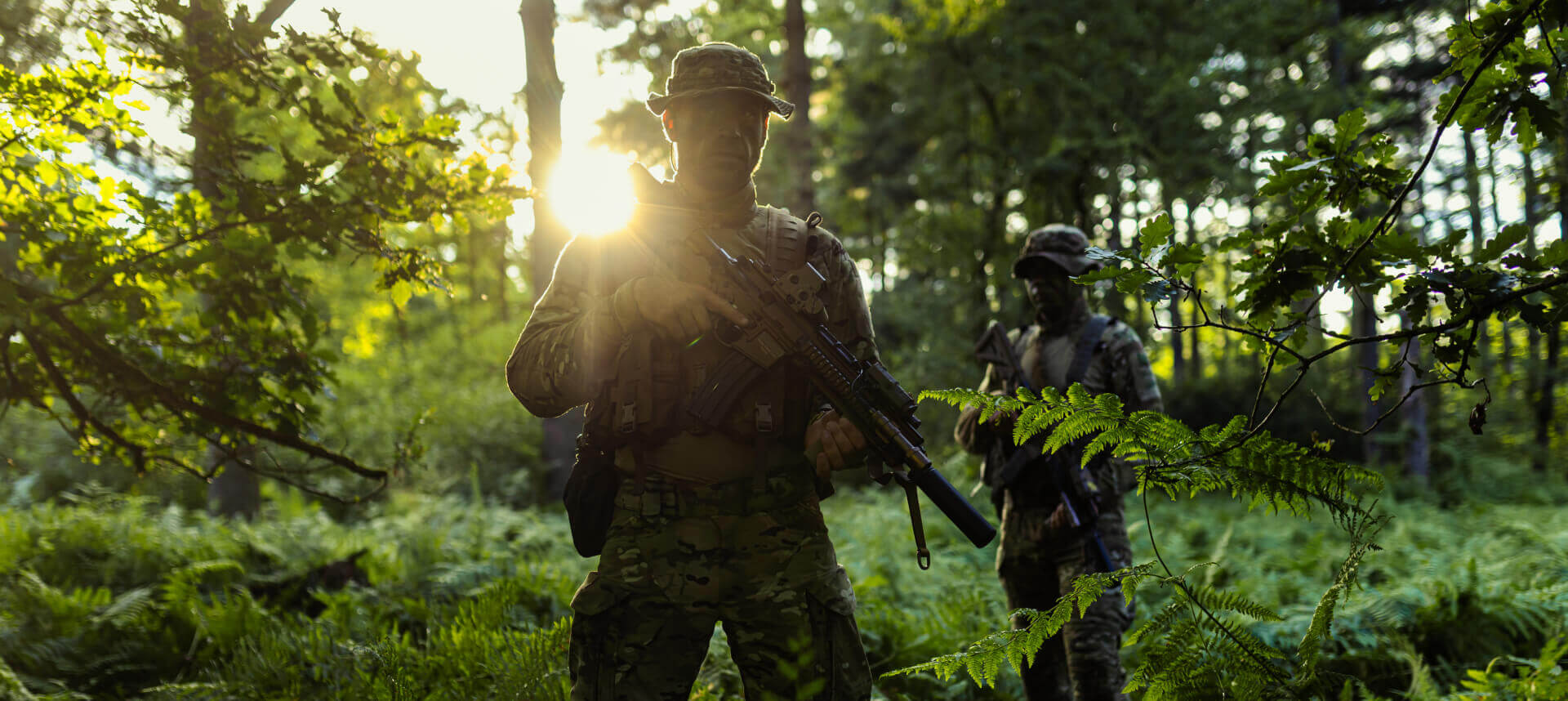
How Camouflage Works in Tropical Environments
In tropical jungles, effective camouflage is more than just wearing a green uniform. Dense foliage and complex lighting require special camouflage that uses three techniques: concealing coloration, disruptive patterning, and mimicry. These techniques work together to make you practically invisible to both human and animal eyes in the jungle.
1. CONCEALING COLORATION: Blending into the Background
The vibrant colors in a tropical jungle range from rich greens and deep browns to the dark blacks of shadows. Tropical camouflage BDU’s must include a variety of these colors to blend effectively.
Patterns like MultiCam Tropic are designed with multiple shades of green and brown. It mimics the color palette of a jungle and allows you to disappear into the background.
With layered colors, concealing coloration creates a natural camouflage that makes it difficult for others to spot you.
2. DISRUPTIVE COLORATION: Breaking Up Your Silhouette
A human shape is instantly recognizable, even in dense jungle foliage. To prevent this, camouflage patterns need to break up your silhouette. Disruptive coloration uses patterns such as stripes or pixelated designs. These patterns fragment your shape, making it harder for others to recognize you as a human figure.
Tiger Stripe camouflage, for instance, uses bold, organic stripes that mimic the lines found in jungle vegetation. This pattern is highly effective in breaking up a human outline, making it harder for others to identify you.
3. MIMICRY: Imitating Jungle Textures
In tropical jungles, blending in with the environment involves more than just matching colors. Mimicry takes camouflage to the next level by imitating the textures and shadows found in nature. For instance, camouflage that replicates the look of tree bark, mossy logs, or dense underbrush can make you look like part of the scenery.
Good jungle camouflage should allow you to blend in seamlessly with your surroundings and hide effectively in any setting.
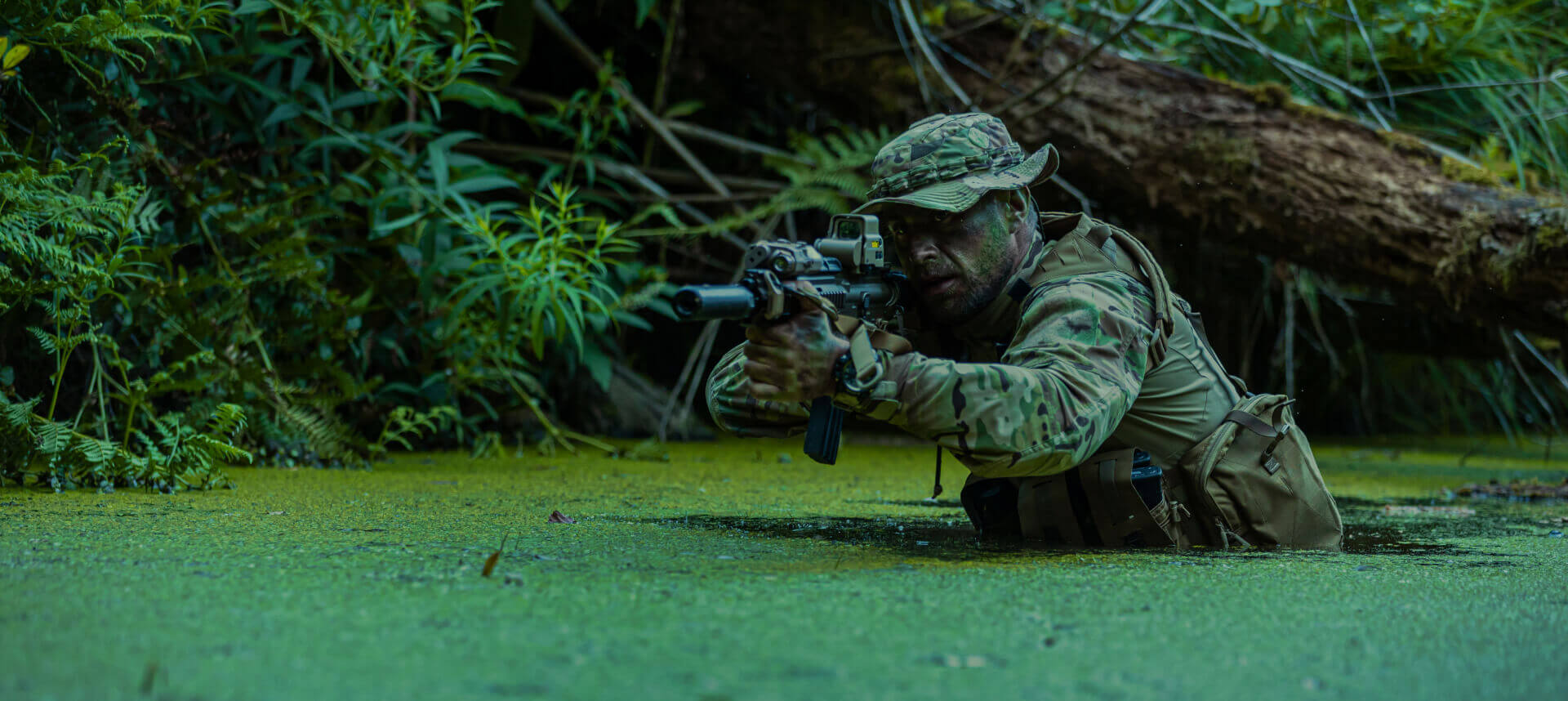
Key Features of Effective Tropical Camouflage
Not all camouflage patterns are created equal, and tropical environments require certain features to keep you hidden. To be effective in the jungle, camouflage needs more than just a good design. Here are the key characteristics of effective jungle camouflage:
-
JUNGLE-FRIENDLY COLOR PALETTE
Tropical jungles are filled with a unique mix of colors, from bright greens to muted browns and deep blacks in shadowed areas. Effective jungle camouflage reflects these colors, allowing you to disappear into the background.
Patterns like MultiCam Tropic use a range of greens and browns that mimic the jungle’s natural palette, making it easier to blend in. Without this jungle-friendly color palette, camouflage won’t work, and you risk standing out instead of blending in.
-
ADAPTABILITY TO LIGHT AND SHADOW
The jungle canopy filters sunlight, creating a constant mix of bright patches and deep shadows. This changing light environment demands a camouflage pattern that can blend well in both light and dark areas.
An adaptable camouflage pattern helps you stay hidden, whether in bright sunlight or shade. Good tropical camouflage adjusts to changing light, keeping you concealed in any setting.
-
NON-REFLECTIVE MATERIALS
In the jungle, reflections can reveal your location. With frequent rainfall and high humidity, anything shiny will catch the light, making it easy to spot.
Camouflage materials should stay matte, even when wet, to avoid reflections. Choosing non-reflective fabrics is essential for jungle camouflage, helping you remain hidden in both sunny and shadowy conditions. This is especially important in humid jungles where the ground is often wet with dew or rain.
-
CONCEALING MOVEMENT
Standing still is rarely an option in the jungle. Whether moving through thick plants or open areas, your camouflage should keep you hidden, even while you're in motion. Patterns like Tiger Stripe help blur movement, making it harder for others to track you as you move. This is especially useful in tactical situations where staying hidden is crucial, helping you move through the jungle unseen.
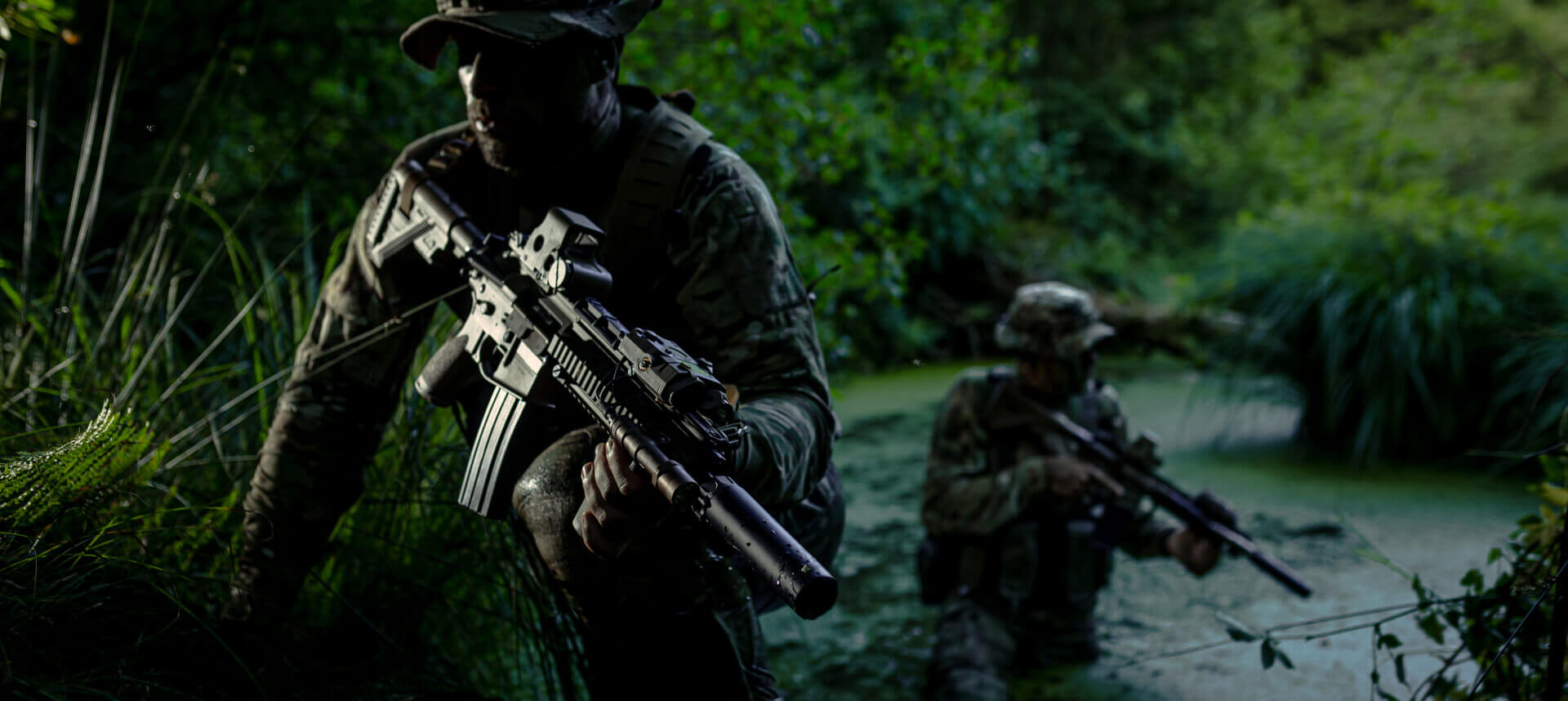
Top Camouflage Patterns for Jungle Survival
Different jungle terrains and missions require different camouflage patterns. Here are some of the top choices for tropical camouflage clothing, each suited to specific jungle settings and needs.
MultiCam Tropic
MultiCam Tropic is considered the gold standard for jungle camouflage. With a mix of greens and browns, it works well in different tropical terrains, from rainforests to savannas. This pattern adapts to various lighting, making it highly versatile for jungle use. Whether you’re in dense foliage or an open patch of ground, MultiCam Tropic helps you stay hidden.
Tiger Stripe
This classic camouflage pattern gained popularity during the Vietnam War and remains a favorite for tropical environments. Tiger Stripe has bold lines that mimic jungle plants, breaking up your outline. It works well in dense foliage, where shadows and leaves make you hard to spot. The Tiger camouflage in the jungle is perfect for blending into leafy, shaded areas found in most tropical jungles.
CADPAT TW (Temperate Woodland)
Developed by Canadian armed forces, CADPAT TW is a digital jungle camouflage pattern designed for dense forest environments. Its pixelated design works like a visual smokescreen, effectively disrupting outlines and keeping you hidden in thick foliage. CADPAT TW works well in shadowy underbrush, where its pixelated pattern blends with the jungle’s layered textures. This makes it a great choice for moving through dense, shaded areas.
A-TACS FG
A-TACS FG, popular with private military contractors and law enforcement, uses organic shapes that mimic natural jungle elements. This pattern performs well in both dense foliage and swampy areas, making it highly effective for tropical terrain. A-TACS FG’s green and brown tones blend well with jungle vegetation, providing strong concealment across different settings.
MARPAT Woodland
Designed by the U.S. Marine Corps, MARPAT Woodland is a digital camouflage pattern created specifically for heavily vegetated areas. Its mix of greens, browns, and blacks offers strong concealment in thick jungle terrain, keeping you hidden in the darkest parts of the rainforest. MARPAT Woodland’s pixelated design works especially well in dense foliage, blending into shadows and underbrush.
M81 Woodland - An Honorable Mention
Introduced in 1981, M81 Woodland became the U.S. military’s standard issue camouflage. Though initially designed for temperate forests, its versatility made it a strong performer in tropical jungles, where dense foliage and shifting light dominate.
During Operation Just Cause in Panama, the pattern's four-color design—green, brown, black, and tan proved effective at disrupting the wearer's silhouette even in rainforests. This helped soldiers blend into humid, densely vegetated environments with limited visibility. However, more advanced digital patterns like MARPAT and UCP have since replaced it as standard issue.
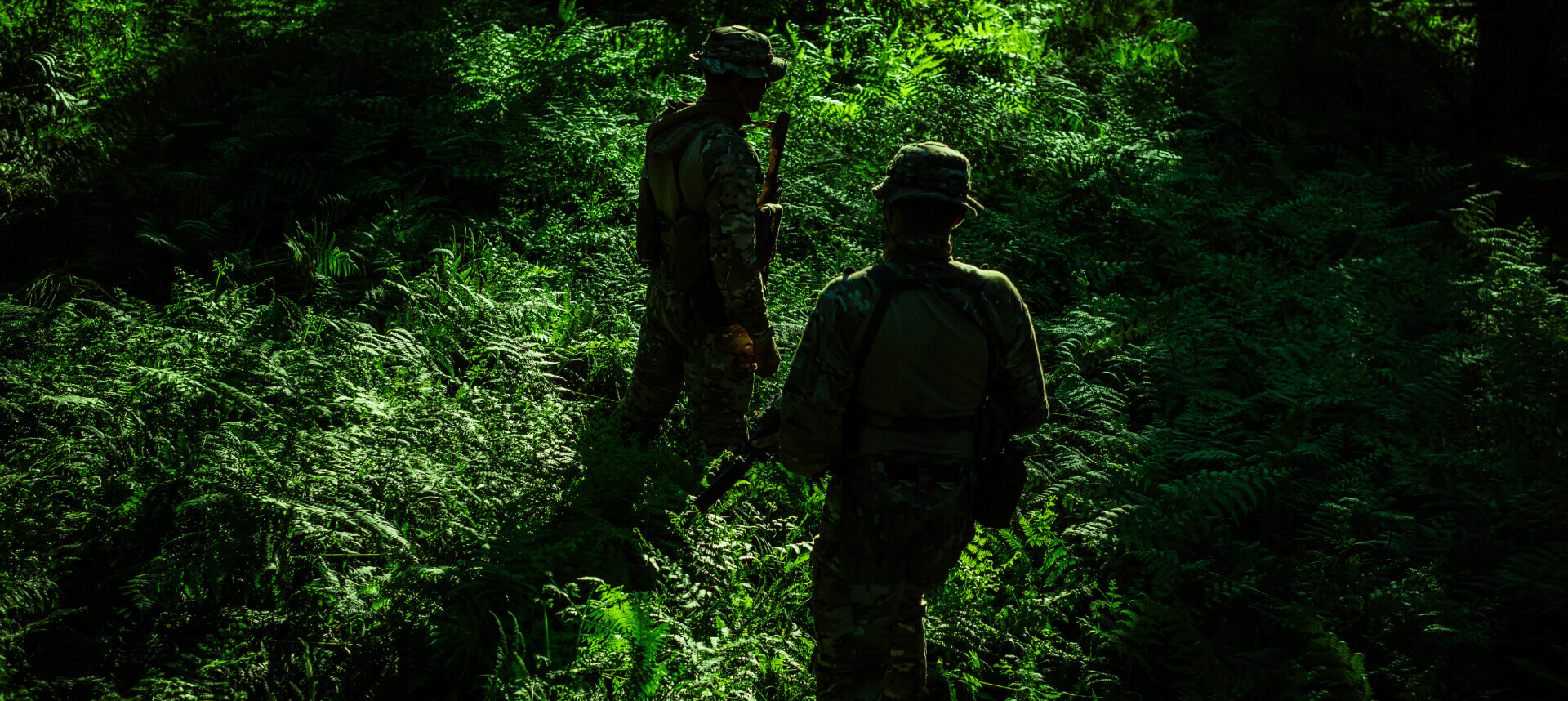
Choosing the Right Tropical Camouflage for Your Needs
Choosing the right camouflage for a tropical jungle depends on understanding your terrain, mission, and durability requirements. Here are some tips to help you make the best choice:
1. MATCH YOUR TERRAIN
Each jungle terrain is different, so choose a tropical camouflage uniform that suits your specific environment.
MultiCam Tropic is a versatile option that works well in rainforests, monsoon forests, and savannas. However, if you’re moving through a specific setting, you may want to consider patterns tailored to that environment.
For instance, CADPAT TW is best for dense, shadowy forests, while Tiger Stripe works well in open, leafy areas with shade.
2. CONSIDER YOUR MISSION OBJECTIVES
Consider your purpose for the camouflage. For moving tactical missions use Tiger Stripe or MARPAT Woodland to hide your shape and blur motion. If you stay in one place, patterns like A-TACS FG provide strong concealment. Pick a pattern that fits your main goals in the jungle.
3. PRIORITIZE DURABILITY
The jungle is tough on gear. High humidity, frequent rain, rough terrain, and abrasive plants can wear down even the best equipment. Your camouflage should be durable and capable of withstanding the challenging conditions of a tropical environment.
Look for moisture-resistant materials that won’t degrade in the rain or tear easily from contact with branches and rocks. Durable, high-quality fabrics keep your camouflage intact and colors from fading, so you stay hidden throughout your mission.
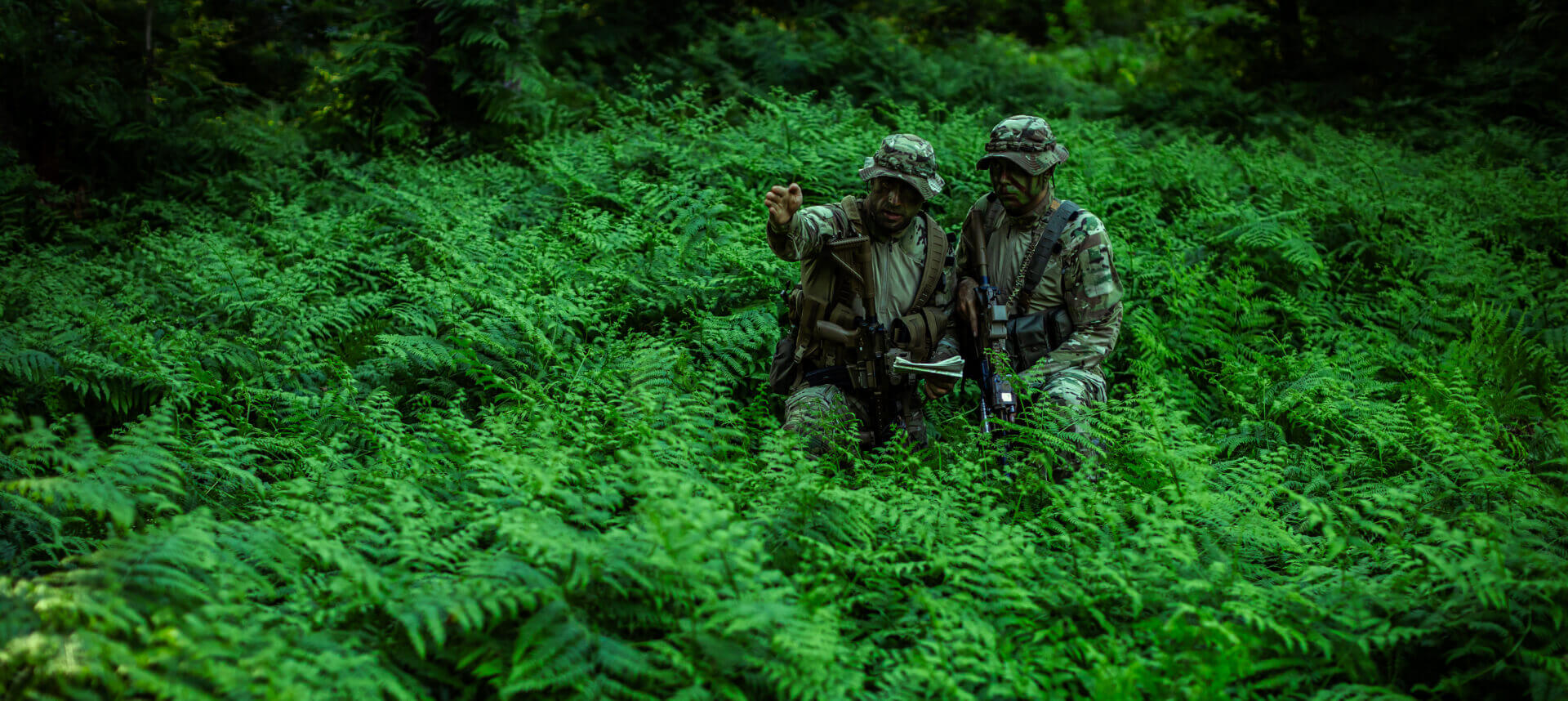
Effective Camouflage Techniques in Action
Knowing how to use these camouflage techniques can greatly improve your ability to stay hidden in the jungle. Here are a few examples of how to maximize your camouflage’s effectiveness:
-
Use Natural Cover to Enhance Concealment
Don’t rely on your camouflage alone. Position yourself behind thick trees, bushes, or logs to blend even more with your surroundings. Use natural shadows to further break up your shape and stay out of sight.
-
Avoid Reflective Accessories
Reflective items like watches, knives, or some fabrics can catch light and reveal your location. Use matte accessories and camouflage any shiny items to prevent them from giving you away.
-
Minimize Movement
Some patterns blur motion, but staying still is usually the best way to avoid detection. Move slowly and deliberately when necessary, and use vegetation to conceal any quick adjustments.
-
Enhance Concealment
Adding a layer of dirt or mud to your gear can reduce visibility by dulling any shine. This also allows you to mimic the textures of the jungle floor, making you harder to detect.
Final Thoughts
Surviving in a tropical jungle often depends on your ability to move unseen. To master jungle camouflage is about understanding the jungle’s dynamic nature and choosing gear that adapts to it. With the right camouflage, you’ll be able to navigate the jungle with confidence and stay hidden when it matters most. Equip yourself with the right camo, trust your instincts, and let the jungle become your ally.
When it comes to surviving and thriving in tropical environments, having the right gear is crucial. The Striker TT Combat Pants and Striker TT Combat Shirt are specifically engineered for these challenging conditions. These garments offer superior breathability, quick-drying capabilities, and built-in ventilation systems to keep you cool and comfortable in humid jungle climates.
The Striker TT combat series boasts lightweight yet durable fabrics that withstand abrasion and tearing—crucial for maneuvering through dense tropical foliage. This ensures you remain focused on your mission, not distracted by discomfort, whether you're on an extended patrol or in the thick of intense combat.

